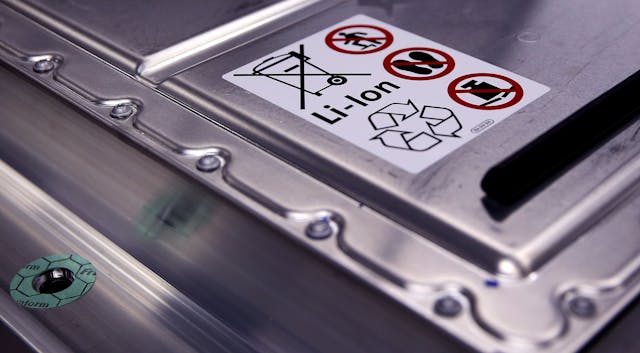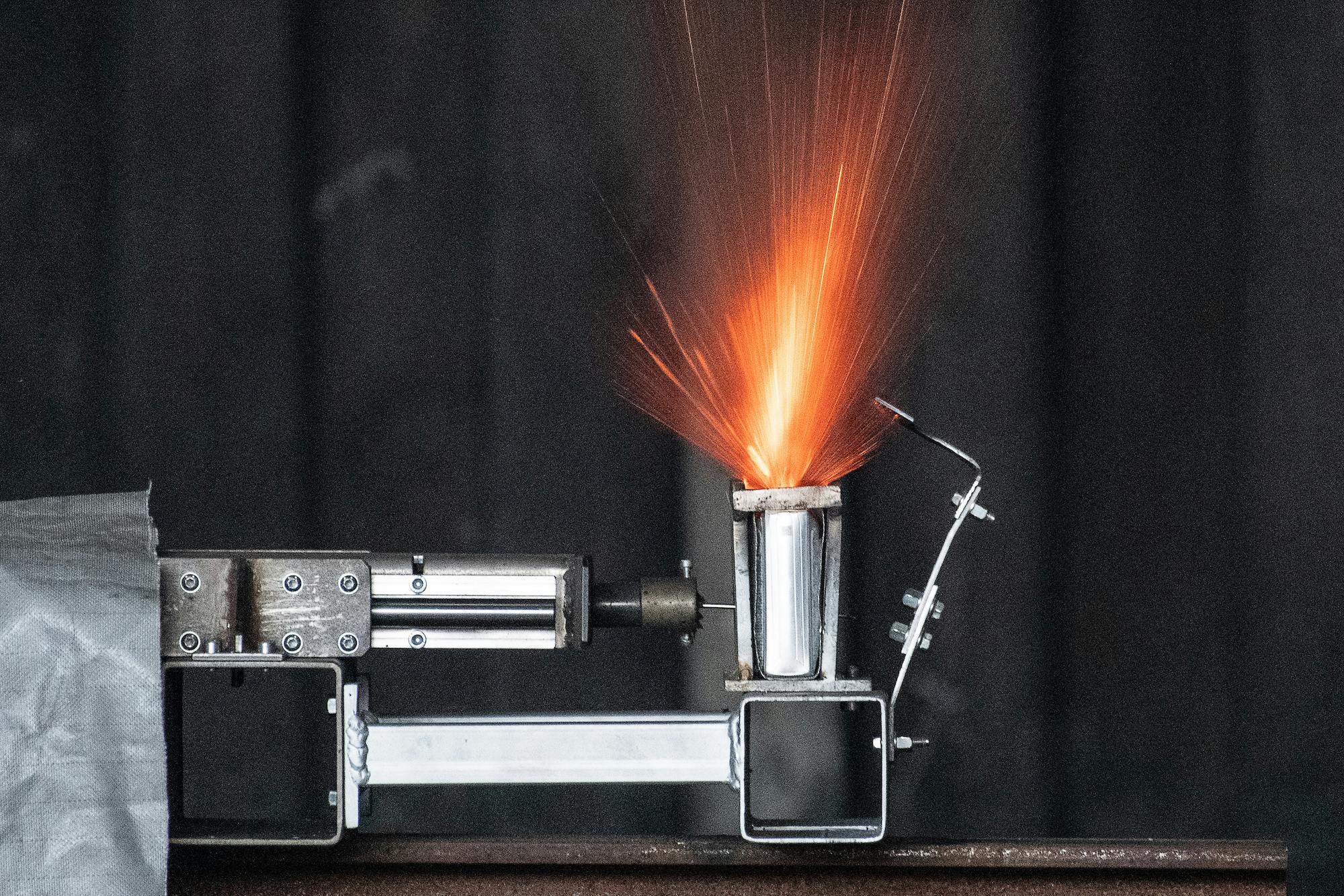Media | Articles
Flameproof car batteries: Just add salt?
Our lives are tied more and more tightly to battery-powered objects. When we think about improving these devices, efficiency tends to be our chief concern, but safety improvements are finally catching up, thanks to a very familiar chemical compound: Salt.
Batteries are all about chemistry, so first we need to mention how conventional, lithium-ion (Li-ion, for short) batteries work.
Inside the battery case are plates. The spaces in between are flooded with an electrolyte made of a lithium salt dissolved in a liquid organic solvent, such as ether or carbonate. Both ether and carbonate are flammable; should the battery case rupture or become punctured, you could easily have a serious fire on your hands (or, if you’re riding a motorcycle, under your butt).

We have known for some time that Li-ion batteries are vulnerable to fire. Thanks to a U.S. Department of Energy Lab operated by Stanford University, which boasts no fewer than three Nobel Prizes in Physics, we may have a practical way to flameproof them.
SLAC (originally named Stanford Linear Accelerator Center) National Accelerator Lab in Menlo Park, California, has developed a new electrolyte with higher salinity that significantly lowers a Li-ion battery’s flammability. Naturally, the lab dubbed it SAFE, an acronym for Solvent-Anchored non-Flammable Electrolyte.
Marketplace
Buy and sell classics with confidence

To be fair, SAFE is not the first non-flammable electrolyte available to battery producers. This is just the first that is viable. Previous concoctions required re-tooling the design of the battery, a process that, for most manufacturers, would be wildly costly and impractical. This new SAFE formula congeals into a gooey substance that can work its way in-between the battery plates of the current case configurations. Per SLAC, switching to the SAFE electrolyte requires no changes to the current manufacturing process at all.
Another big plus to using this salt-heavy cocktail: The batteries can safely operate at a slightly higher temperature without worrying about thermal runaway or the case bulging and bursting into flames as the cell temperatures rise. With less need for cooling, the same-sized battery pack can now pack more energy. In the automotive world, that could mean cars with longer range but no added weight.

While cars have been the latest high-profile instance of lithium-ion batteries posing a fire risk, you don’t have to go far into the past to find smaller handheld electronics overheating and exploding in balls of fire. SLAC’s new electrolyte can be used far beyond the transportation sector, so it will likely make so many devices that we interact with daily a little safer.
Check out the Hagerty Media homepage so you don’t miss a single story, or better yet, bookmark it.






This is good news. I will feel somewhat safer when some distracted EV driver rams my internal combustion powered cars.
Of course, no ICE driver ever runs into an EV. How about the lady that ran a stoplight and hit my wife’s Tesla about a year ago. Kind of like saying all blondes are stupid, and only Democrats commit voter fraud!!
You got it.
Aren’t we ignoring the elephant in the room? What about the Lithium when combined with water liquid or vapor it spontaneously violently combusts.
That is pure genius and not even making money from the idea. That is a miracle in itself nowadays.
Don’t be too sure about not making money off the idea. Universities spin off companies to make money off of their research. So, if this is patentable, it will be profitable.
So salt is good for your health!
Being retired from UPS Airlines, I recall a DC-8 catching fire (fortunately on the ground) in Philly. Later we discovered a customer had shipped Lithium batteries for phones and tried to disguise what they were shipping. These batteries are prohibited from aircraft for good reason. Let’s hope the brilliant chemists and academicians in the world will render all batteries safe from fire. We’ll all be better off!
I second 83, but I’m still keeping a container of Morton’s salt on hand.
🤣
You’re from a time when sprinkling salt on a wood fire in a fireplace would produce pretty colors..
Too bad we didn’t know about this new safer lithium battery before millions of the current ICB (internal combustion batteries) were manufactured and built-in to millions of EVs .
Just sitting in your garage waiting to burst into flames. You can always use the government new EV rebate cash to re-locate your home charging station to the far end of your driveway … Just in case.
Will any current EV assembly lines be shut down waiting for these new safe batteries ? I think not.
The other elephant sitting quietly in the corner is disposal. Without proper disposal, all these salty and plain extra crispy litium batteries will end up in landfills ruining or drinking water. And don’t say the R word since there aren’t enough recyclers to handle all the battery waste.
This is a much needed upgrade to reduce the risk of fires and fatalities. EV batteries can and do short out, sometimes as a result of manufacturing defects (such as Chevy Bolt and Volt), and sometimes because of damage or an accident. The problem is once an EV battery starts to burn, you can’t put it out. Even when the car and battery are being flooded with gallons and gallons of water, the battery will continue to burn and smolder for hours (sometimes up to 24 hours!). All a fire dept can do it try to keep the flames away from other nearby structures or vehicles. And when the fire finally seems to have burned itself out, the vehicle should be towed and stored away from other vehicles or buildings because the battery may reignite and start burning again.
As a firefighter in nyc ev batteries are not as much an issue as scooter and bike batteries which are causing fatalities at an unprecedented rate. We can put them out with copious amounts of water but the remain unstable for days. Storage and recycling is a huge problem with discarded batteries.
Well if we keep buying them then who’s to blame? Vote with your money. Lets find a better way.